 |
 |
| |
|
| |
|
|
| |
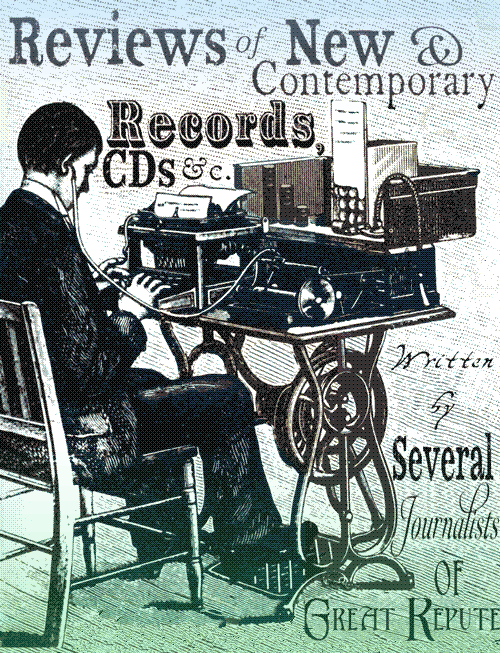 |
|
| = February 2017 = |
|
|
| Alasdair Roberts |
| Glowpeople |
| Xela Zaid |
| Rob Byrd |
| Barrett's Dottled Beauty |
| Green Pajamas |
| The Hangabouts |
| 8 x 8 |
| Trolley |
| Demian Castellanos |
| the Brainiac 5 |
| Centralstödet / Myrrors |
| EGone |
| Isaya |
| Lamagaia |
| Vangelis |
| Mike Oldfield |
| |
| |
| |
| |
| |
| |
| |
|
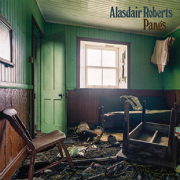
Home |
ALASDAIR ROBERTS – PANGS (LP/CD/Download from Drag City http://www.dragcity.com)
Even if Terrascope were not promoting his Trio’s appearance at London’s Café Oto on 23rd February, you wouldn’t expect us to post a dispassionate review of a new Alasdair Roberts album here, kind and gentle reader (or for that matter the rest of you).
Terrascope is not in the habit of lending its name, or anything else, to something we don’t wholeheartedly approve of and Alasdair Roberts ticks all the boxes as far as we are concerned. Possessed of an old fashioned work ethic that has seen him pay his dues through the clubs and via a bewildering array of collaborations, he embraces any number of traditions and performing situations. His voice, roughly hewn, occasionally strained, mournful sounding and heavily accented is 100% genuine, while his song writing is never less than imaginative, a fertile breeding ground of ideas, with ingenious twists and turns to rival an episode of ‘Sherlock’ (without any of the smug aura of self-congratulation). It also goes without saying that his playing is iridescent and sublime.
A title track is as good a place as any to start and frankly you’d be hard pressed to find a better title track. Heavily redolent of Fairport (‘Crazy Man Michael’ comes to mind in the early stanzas) cut with essence of Greensleeves, this is Roberts the troubadour lent additional expanse and heft by a band arrangement. It skips along effortlessly, as good a folk/rock staple as any in the past 40 years and represents an early show of intent from the Power Trio of Stevie Jones on bass and Alex Neilson on drums. A better crossover too, no doubt, than the controversial London garden bridge, and better value.
The exquisite ‘No Dawn Song’ features strings and piano as well as Jones’ dusty sounding stand-up bass, which together with Neilson’s lightly percussive runs lends an air of Pentangle to proceedings. It’s indicative of the thoughtful and supremely well-crafted arrangements throughout. A genuinely beautiful moment, ‘The Breach’ is truly one of the album’s outstanding cuts - Roberts’ renaissance phrasings duelling with Rafe Fitzpatrick’s violin, his voice intertwining with a restrained but sympathetic accompaniment courtesy of Debbie Armour. It’s another timeless composition steeped in tradition - both in the Trad. Arr sense and the way in which it evokes the more tuneful and accessible recesses of the ISB canon - while also managing to be refreshingly inventive.
You want rock ‘n roll? Well let’s face it you’re hardly likely to get your wish here, but ‘The Angry Laughing God’ nudges Roberts and co into Richard Thompson big band territory. It’s then the turn of gentle waltz with ‘Wormwood And Gall’, and another delicate, disarming and unerringly arranged melody, enough to get even a heard-it-all scribe a little moist around the edge of the eyes (must be the cold I reckon).
The ‘Downward Road’ is the album’s outrider having been trailed for a few weeks. It’s the most Caledonian thing here and no bad thing either. It probably showcases the trio at its most versatile and best, again bolstered by Fitzpatrick fiddle, and while the next couple of tracks while appealing appear to mark time by comparison, the aptly named ‘Vespers Chime’ is a quite charming chamber-folk piece.
Pangs plays out with ‘Song Of The Marvel’, a strong personal favourite I’ll have you know, and which evokes a feeling of punting downstream on a lily pad, a graceful and unhurried journey straight into storm clouds and the oft-repeated refrain “tell me the evils you saw on your rambles” before the clouds lift the other side (“tell me the heroes you saw on your rambles”). A gorgeous coda belies the darkest lyrical imagery outside of a black metal album all disarmingly delivered and tastefully served up, with echoes of the Incredible String Band and Trembling Bells in its departing.
We’d be guilty of hyperbole were we to label this a classic and of course by rights it would need to be oak-aged for at least 20 years before we could even think of whispering in those terms. Right now we can be content in the knowledge that this one will mature sweetly of its own accord. Roll on Café Oto on 23rd February, and if you can’t make that then do yourselves a big favour and catch Alasdair (and, for the most part, the Trio) at one of his other events up and down the country.
(Ian Fraser) |
| |
|
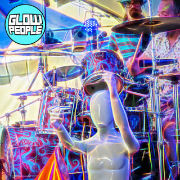
Home
|
GLOWPEOPLE – PLAYTIME
(Available in download formats from Cosmic Primitive and Little Struggling Ant Records. More information here
https://glowpeople.wordpress.com)
If as expected this is to be the last Glowpeople release then it’s entirely fitting that it should capture them at their best and in their closest natural environment.
Recorded live at Kozfest 2016, the band rattles through a set comprising material from their three official studio albums, mining a rich and sprightly seam of danceable jazz-funk that is also relaxed and spacey enough to show why they are, or perhaps more accurately were staples of the space rock scene while standing miles apart from the usual “riffs with wind machine” Hawkwind acolytes.
Rhythmically elastic bass lines underpin a busy and dextrous sound that often evokes hybrid of Gong which if not expunged of Pot Head Pixies then at least sees them largely exiled to a rocky green planetary outcrop. ‘Space Hammer’ for one could in fact be an outtake of ‘Isle Of Everywhere’ played at 45 rpm and ‘Metaphorical’ too is redolent of that knockabout almost Burlesque quality beloved of Allen and co.
Crowd favourite ‘Medusa’ is so danceable that even someone like Yours Truly, possessed of a couple of rusty old springs for legs these days can have a go. It follows hot on the heels of ‘Tie Dye Sky’ which encapsulates their neat trick of melding 90s Acid Jazzers Red Snapper with the Ozrics, courtesy of some ferocious Ed Wynne sounding guitar and a vaguely Eastern rhythm. ‘Algebra’ takes a momentary foot off the gas with its trip dub, while the busy rhythms are further punctuated by the loping reggae grooves of ‘Everywhere’ and the sublime ‘The Saddest Flower in the Vase’ - the latter’s pin-point bass lines, muted trumpet and rumbling pulse placing it in slightly darker territory than the rest of the set. It all ends, rather appropriately, with the funked-up ‘With You Without’ with its thematic play on ‘Summertime’.
If indeed this is their swansong then it’s as well that it should have been documented thus and have the benefit of a decent live mix.
Somehow summers just won’t be the same again. (Ian Fraser) |
|
|
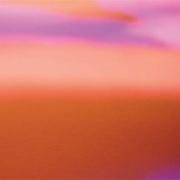
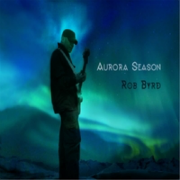
Home |
XELA ZAID – ORANGE VELVET
(LP from Partycul System http://www.partyculsystem.com)
ROB BYRD - AURORA SEASON
(CD/Download from https://robbyrd.bandcamp.com/)
A Veteran of the Miami music scene, Xela Zaid’s latest album (his first for the French Partycul System microlabel) is a collage of outlandish and occasionally unsettling pieces that at their best are inventive and well worth exploring.
The intense electronic sampling of ‘Whitney Whispers’ is in contrast to the woozily ecclesiastical sounding ‘Soft Sleep’ which bleeds into the delightfully synapse tickling ‘Twelve’ while the crackling static of ‘Santa Fe’ threatens to engulf Zaid’s vocal. It is all by turns (and at times concurrently) sparse, spatial and surreal to the extent that you wouldn’t be surprised if it came with a label marked “eat me”.
Well that pretty much takes care of the Orange side. The reverse slab (Velvet) covers very similar ground, chugging layers of echoing drones and curious samples occasionally punctuated by Zaid’s slightly thin and desperate sounding voice. It’s an intriguing collection which more of often than not works well enough and which retains most of its allure and mystique on the wordless tracks.
Another seasoned campaigner, Rob Byrd, meanwhile creates an aural galaxy of sound through his guitar, which he plays in reals time through original sound design, eschewing the use of overdubs, backing tracks or loops. Well if that’s the case then the sounds he is able to capture on album – the word ‘soundscapes’ could have been invented to describe the lush ambient textures herein – is most extraordinary.
Truthfully there is little to choose between the decimal of cerebral compositions which could indeed have been written as a serenade to the Northern Lights (and which at key moments must have reconfigured themselves to form the words New Age) and little more I can report except to say that I was a struck with an overwhelming urge to rush out and buy some healing crystals and which, I’m pleased to report, passed soon enough. No need for one of those relaxation tapes, either. This is wonderfully dreamlike and soothing enough to dispense with the need for cheap imitations. Just the job.
(Ian Fraser) |
| |
|

Home |
BARRETT’S DOTTLED BEAUTY – OWLS IN HER EYES
(LP on Les Enfants de Paradiddle)
Kitchen Cynic Alan Davidson and Pefkin Gayle Brogan are back with their second collection of avant, experimental folk noise. Opener ‘The Cynic, The Dipper & The Thrush’ sounds like an autobiographical title (!), but the music is as soothing as a warm bath on a cold winter’s day. Droning acoustics, Brogan’s lilting vocals, treated tape loops, and bubbling electronic flourishes occasionally prompted (or directed) by Davidson’s aphoristic utterances combine to create a dreamlike state for self reflection. ‘Forvie’ is as haunting, melancholic and hallucinatory as a day spent wandering through its namesake’s drifting sands. Multi-tracked vocals compete with subtle fuzz guitar and electronic soundbeams to provide your personal soundtrack for a walk amongst the dunes, communing with scores of wigeon, oystercatcher, golden plover, and, dunlin. And in a case of psychosomatic listening, I thought I heard some whales calling to me from Hackley Bay. It’s a truly spiritual experience.
The flip side contains two more meditative pieces, including the title track, an eerie sound collage of gull-like whistling and wailing electronics set to a dreamy, drifting pulse beat. Guitars wheeze like electric violins in the background throughout this calming, yet still unsettling composition. More sonic effects and throbbing wah-wah treatments permeate ‘The Rain Has Come In Misty Showers’, with Brogan’s treated whispers recalling Mia Farrow’s ‘Lullaby’ from Rosemary’s Baby.
It’s all very romantic and heartwarming, and yet there’s an ominous element that will keep you pinned to your speakers waiting for that other shoe that never drops. Simply stunning. Hurry to grab one of the 80 hand-numbered albums, each featuring one of Alan’s unique, handmade collaged covers!
(Jeff Penczak) |
|
|
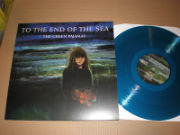
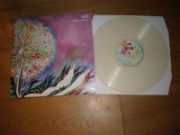
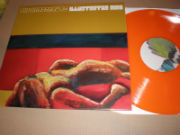
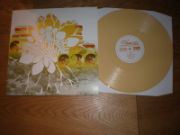
Home
|
THE GREEN PAJAMAS - TO THE END OF THE SEA
8X8 – INFLORESCENCE
THE HANGABOUTS - ILLUSTRATED BIRD
TROLLEY - CAUGHT IN THE DARKNESS
(LPs from www.sugarbush.com)
Sugarbush records have some new super limited coloured vinyl releases out, the first of which is... The Green Pajamas islimited to 335 blue vinyl copies, is my pick of the bunch and is a real gem of a record. Full of watery images, it’s a kind of concept album concerning all things aqueous. Some two dozen albums into their career and they have hit somewhat of a purple patch, you can just tell that this lot have played together many times investing the record with a real depth and understanding of each other’s strengths.
Things kick off with Will The Ships Go Down, all heavily treated vocals over a tune of crepuscular nature, with lots of sinewy violin building the atmosphere nicely. If You Follow The Moon, follows with a siren call to the deep, lots of moody atmospherics. White Lighthouse, is classic Jeff Kelly, very clever split into parts with a fine loping cyclical rhythm, male and female vocals washed in Mellotron and piano, Sea Of Secrets 1, a trilogy combined with Who Is The Girl and Madness To Burn, is a rather beautiful suite, very strong on melody with more violin and piano given plenty of room to frame the lyrics. This segues into the pure pop joy of When Juliet Smiles. The side ends with A Mouth Full Of Honey, dreaming of pearls from the deep, smell the rich iodine of seaweed and the moon on the shore as the sirens call us deeper into the sea.
Side Two opens with the fairly straightforward rock of Ten Million Light Years Away, this one has an electric guitar solo on the ride. Anyone But Me is a hazy summer stunner, warm languid tropes of wheezing Mellotron contained in a chamber pop arrangement, ending with some nasty fuzzy lead guitar, heaven. Got To Go Away, and Juliet’s back again, trying to light her fags in the damp air, he can’t seem to get her off his mind, she is possibly his siren.
Big Black Storm, well it’s been brewing for a while now and the controlled tension is building, storm clouds thunder over a nice orchestral chamber pop tune, glorious. Why Did I Think I Could, sung by Laura Weller is a questing song, that bursts into life a few minutes in, with more of that controlled fury from the band. Over Here, ponders upon the grass that’s always greener on the other side, a mid-paced, piano led ballad. The record ends, with To The End Of The Sea, wrapping up all that’s gone before with a Spanish chorus and a bit of trumpet.
Moving on, 8x8 - Inflorescence is limited to 300 opal vinyl copies. Well this is surprising, a record made by a couple of people who have never met. Through file sharing they have created this pretty cool record, one that I was prepared to dislike, as surely you can’t make a decent record that way! Well life is full of surprises and here’s another one. First track Stop The Madman, is a pretty unconvincing lacklustre opening song, which I found a bit psych by numbers, slightly lumpen and clumsy. But from here on things take an upturn with the clever pop of My Summertime High, infectious and soufflé light, replete with a wonky guitar break. The Essence could well be the best track on the album, nagging riffs, tight harmonies and plenty of time changes with a neat coda at the end, three magic chords, this one could have gone on and on.
If you need something to compare this to, well I get hints of Jellyfish, The Byrds and The Beach Boys with melodies to die for. Off we go for a psychedelic drive in the country with After All Is Said And Done, with its neat Mellotron appeals greatly, out of the middle part of the song, comes some nice wah wah guitar, reminiscent of Jerry Garcia circa Cats Down Under The Stars, accompanied by lightly phased lyrics, I told you it just gets better, what a gem. Bubbles, is a pretty confection with stabs of organ and clattering drums sung in a slightly Dylanesque way, the side ends with Head Heart & Tails, not unlike something the Soundcarriers come up with, just a bit more trippy, with oodles of Mellotron.
Side two starts with No More Second Chance, a Beatles style tune, replete with all the trimmings, also a tad Moody Blues, what with the organ. The Six Fifty Three, more churchy organ and busy percussion is a fairly straightforward song. Between The Double Curtain, Jazzy guitar and tabla, slide us into an instrumental that also has some nice Country Joe and the Fish organ throughout. Aftermath, with its hints of Echo And The Bunnymen, is all too brief, again plenty of Mellotron and clear bell like electric guitar. Some Surreal Idea, deals with misconceptions, a ghostly church like organ underpins this sparse tale of woe, here, I’m also strangely reminded of East River Pipe. Perspective, ends the record, seen from the eyes of an astronaut, and sung to a bed of acoustic guitars and organ, which all bleed into a Floyd-like electric guitar solo.
Next up, The Hangabouts, whose Illustrated Bird is limited to 300orange vinyl copies. Beginning with Roman Forum, a woozy reimagined trip to a banquet in Roman times, tubular bells and Mellotrons add decoration, then straight into the Electric Light Orchestra moves of November, a quirky pop song, catchy as a dose of crabs, it has some nice clever time changes and reeks of the mid seventies, most enjoyable. Cut Down is infectious, lovely keyboards and shimmering guitars over a super tight rhythm section, again we have some Mellotron, an instrument which is now becoming quite ubiquitous. Love Nothing, tight and modern with flourishes of flute is short and sweet. Illustrated Bird, the title track is a nice Zombies type sixties tune. The side ends with I’ll Get Over It a breezy delight. John Lowry and Gregory Addington who are the Hangabouts, swap guitars and keyboards throughout the record that together they both wrote, arranged and produced.
Side two opens with She Hates You, a tight pop song with gently chiming Rickenbacker and Jazzmaster toned guitars, super tight harmonies a lovely tune with a sting in its tail. Dr Dragon, not unlike the recent outpourings of Papernut Cambridge, and bang on the money, lots of piano and wah wah / Leslie guitar. Right On Catherine, is a short coda. Missing In Action, comes on like classic period Squeeze. I Wonder Why, fey and very short with Viv Stanshall style woodwind. Forest For The Trees, a sweet, harmony rich tune with plenty of organ fills. Go To Sleep ends the record with a paean to sleep, it gently rocks us off to the wheezing fog of a Mellotron.
Finally, Trolley - Caught In The Darkness islimited to 300 buttermilk yellow copies. Things kick off with the title track, a power pop song not unlike the stuff Cotton Mather do. Thursday Girl, heads into Hollies territory. Step Into The Clear, has chiming Rickenbacker guitars and twinkling piano, I do feel the drums are a bit too high in the mix. Crying All The Time, isa pretty standardpower pop song with nice syncopationand dirty guitar. She Has It All, reminds me of Elvis Costello if he would have been around in the sixties. All The Way, closes out side one, and here I’m put in mind of the Bath-based band Interview.
Side two starts off sprightly, with I’ll Stand In Line, an up tempo rocker with some nice Farfisa thrown in, again some nasty guitar too. She Helps Me Celebrate, continues in a similar vein, a bit more of a punk rocker, I also get bits of Brit Pop, as well as the obvious sixties music, real magpies this lot. Losing That Madly In Love With Her, pretty straightforward power pop song. Feeling We All Fall Down, is another clever pop song with nice keys and crunchy rhythm and plenty of Farfisa. The Kids All Sing, ups the energy, and again reveals some of their punk rock influences but again in a sixties style. Take My Love, my personal favourite closes out this record from the Milwaukee group, whose earlier full length album ‘Things That Shine And Glow’ won a lot of praises, it’s a sound effect laden, baroque pop tune, with some nice harmonies and plenty of changes, it’s also the longest track and the only one where you feel the band being able to stretch out a bit. (Andrew Young) |
| |
|
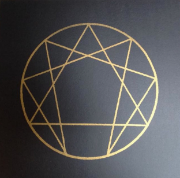
Home |
DEMIAN CASTELLANOS – ETHER
(LP from Cardinal Fuzz/Out Of Phase Frequencies
http://cardinalfuzz.bigcartel.com/)
Best known as the main creative force of London psych favourites The Oscillation, Castellanos also has a well-charted and abiding fascination for ambient and exploratory instrumental workouts.
It’s also something he does extremely well, as evidenced by his Kyvu Tapes release a couple of years back. Ether follows a similar template in that it was pieced together during Castellanos’ formative musical years and recently titivated by way of a superior mix. Siren wails and shimmering reverb, stately drones and slow pulsating rhythms make for a spectral not to mention quite special invocation over a single 30 minute piece. In an age of political and social toxicity when everyone appears to be perpetually uptight then this could provide something of an aural antidote. Failing that, though, it’s a half an hour of anyone’s time well spent. (Ian Fraser) |
| |
|
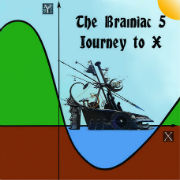
Home |
THE BRAINIAC 5 - RETURN TO X
(LP/CD/DL http://www.brainiac5.co.uk/)
Reverting to a four piece band with the introduction of a new drummer Joe Malone, the west country psych/punk outfit have made a phenomenally good record. Endless River, eases us in with a minute long guitar intro which leads swiftly into The Human Scapegoat, which over its twelve minutes takes in some excellent duelling guitars ala Cowgirl In The Sound. It deals with sacrifice to ensure a fruitful harvest, along the way we get to see why Joe Malone has been brought aboard, his drums kick the whole thing into another level, this is a pretty heavy rock song with plenty of twists and turns along the way, bolstered by a big crunchy rhythm section, nice to have them back.
Laura Riding, named after the muse of poet /novelist Robert Graves, for this song we have treated kalimba and birdsong at the start which yields to some incendiary guitar work, nice. At Noon, is based on a poem by Elizabeth Jennings, it fairly rocks, a nice walking bass figure with some fine wah wah guitar and a cooking rhythm section. It is also quite a funny tale with the spoken word bit reminding me of some of the solo Kimberley Rew albums, love it. The World Inside, a mid tempo rocker about meeting your soul mate and confiding in them. Some Things, nice Jazzy supper club guitar intro has guest vocalist Jessie Pie adding nice smoky seductive musings over a cool rhythm and it also has a splintered dirty guitar solo but ultimately swings. Kill It, another ten minute epic finishes off this record from a rejuvenated Brainiac 5. It starts like a Dr Feelgood number, all Wilko moves with plenty of harp and tribal drumming, duelling guitar over a tight rhythm section, allowing the band to stretch out and take us into the classic psych punk territory that they are rightly known for. (Andrew Young) |
|
|
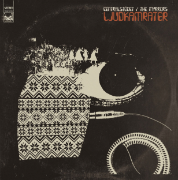
Home |
CENTRALSTÖDET / THE MYRRORS
– LJUDKAMRATER
(LP from Cardinal Fuzz and Sky Lantern Records
http://cardinalfuzz.bigcartel.com/)
This transatlantic mash-up has, to say the least, been much anticipated. In this case though the experience of the arrival matches that of travelling hopefully although not without a slight bout of turbulence initially.
The three tracks by Swedish outfit Centralstödet are imperious improvisations in the finest tradition of strung-out instrumentation, featuring plenty of dopey-sounding bass and wringing every last dreg of noise out of guitars and amps, including some that in all probability hadn’t occurred to the manufacturers. Incendiary opener ‘IE’ is the obvious crowd-pleaser, featuring as it does full-on, everything plus the kitchen sink brain melting aural pyrotechnics and hefty slab of riffing in the outro. The one that really does if for me mind is the jagged and more off-kilter ‘Vegas Bodega’ possessed of a certain avant-garde quality that even Frank Zappa might approved of. The only niggle is the liberal use of fade endings, which leaves one wondering how they manage in a live environment.
Did I mention turbulence back there? Let me explain whilst at the time beg for clemency. The Myrrors’ side-long contribution was, on first listen, a bit of a let-down considering their pedigree and the esteem in which they are rightly held in psych land. ‘Rayuela/The Night Codex’ all starts promisingly enough in a suitably lysergic, dandruff-shaking style and then sort of treads water, seemingly biding its time until the needle hits the run off. Second time around and it all clicks into place, though, revealing a subtly insinuating Faustian pact (as in the Wümme version) with whatever cosmic deity or demon takes your fancy. By the third listen it all made perfect sense, the yang to Rayuela’s ying, or should that be the other way around, I never did know.
How could I have even fleetingly thought otherwise? Hope you can forgive me. (Ian Fraser) |
| |
|

Home |
E GONE - ADVICE TO HILLWALKERS
(CD from http://www.dwacres.com/)
This is the second release for this album, originally coming out in 2015 on cassette, the CD adds a couple of extra tracks and the whole thing has been remastered. Daniel Westerlund is E Gone and is a native of Sweden. Playing a number of instruments on this purely instrumental record he introduces us to a fine mix of traditional instruments combined with digital technology he creates a fine stew of bubbling electronic and Eastern flavours pulling out bazooki’s, banjo’s, guitars, and vintage analogue synths .
We go on a journey following Moonmilk River, building camps out of Alpine Moss, a bit of night hiking, effective use of compasses, Ice Axes, rope and tents, checking out the humming of melodious caves and continuing up the steep ascent while blindfolded to reach the summit, Egg.
Moving through these songs utilising all manner of interesting instruments, this record is the nuts, a really good dollop of space rock, bits of hauntology, lots of good eastern motifs, a touch of knotty prog, a bit of dub, cheesy organ and lots of great percussion. One song can encompass a bit of Martin Denny exotica mixed with a bit of surf rock space rock, another may have space whispering and big squelchy beats with bazooki. Mention too must be made of the sound effects running through these 42 minutes, rumbling thunder, rain falling, water moving underpinned with plenty of signal drones.
It’s all over the place but in a good way. It shouldn’t work but it does and in style, I am sure I will be revisiting this record plenty in the future. Highly recommended. (Andrew Young) |
| |
|
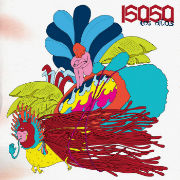
Home |
ISAYA - LOS DIAZ
(LP from www.lacastanya.com)
Madrid Guitarist Conrado Isasa, has delved deep into the American primitive style of acoustic guitar exploration. Over a series of unaccompanied Instrumental tunes, he presents us with various strung acoustic instruments, acoustic guitar, weissenborn acoustic guitar and frailing banjo, with a little bit of electric guitar.
The songs move from intense to calm and vice versa. It’s often hard for this type of music to hold people’s attention and can often sound a bit samey, but Conrado invests these songs with a hell of a lot of feeling and knows when to up the ante and also when to let a few notes do a lot of work. He also knows when to add a bit of drama into the proceedings, and that combined with a big helping of volume make these songs sing.
Commenting on each song is really pretty pointless as the whole piece deserves to be played as an album, and indeed works best that way. I am reminded at points during the record of Paris era Ry Cooder , a bit of John Fahey (yes I know) and Robbie Basho with one song employing electric guitar, there is also a banjo played in a very old mountain string band frailing style. My favourites are the delicate El Mar, The gorgeous Miga De Pan, the playful Ronda De Segovia and the closer Ribera Del Manzanares. Liner notes by esteemed guitarist Glenn Jones a man who knows his way around an acoustic guitar. (Andrew Young) |
| |
|
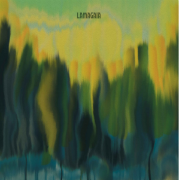
Home |
LAMAGAIA – S/T
(LP from Cardinal Fuzz/Sunrise Ocean Bender
http://cardinalfuzz.bigcartel.com/)
More Swedes, then, and psychedelic ones at that. And where there are psychedelic Swedes there usually lurks, not too distantly, Cardinal Fuzz and Sunrise Ocean Bender. A dirty, thankless job, no doubt, but be very thankful someone does it.
A two track album might smack of dangerously progressive proclivities or else a worrying symptom of anal retention but there’s nothing woolly or indulgent about the focussed and occasionally ferocious onslaught of ‘Aurora’. This is a belter, pure and simple - an immense gravitational down pressure. If you like Hawkwind circa Space Ritual then you’ll have difficulty containing your excitement, such is the ruthless pile driving metre and Dave Brock-style riffing, overlaid with the often incendiary scorched earth quality of a White Manna or Hills (and even at times White Hills).
Flip it and ‘Paronama Vju’ starts off with admirable and tasteful restraint (in running parlance we would term it “pacing oneself”) before building incrementally through a passage that echoes with the ghost of Quicksilver and Man during their more recreational improvisations. An insistent rhythm builds, complemented by a rasping saxophone evoking not so much Hawkwind on this occasion as West Walian festi stalwarts Sendelica at their expansive and evocative best while the coda does nothing less than rake furrows into your grey matter.
Straight out of the top drawer, then, but hell don’t take our word for it. Buy, buy before it goes bye-bye.
(Ian Fraser) |
| |
|
 |
VANGELIS – DELECTUS
(13 CD set on UMC / Polydor)
Everybody knows Vangelis’ music… or do they? The recent release of Delectus, a thirteen disc collection featuring his Polydor and Vertigo albums, suggests there is far more to the man than revealed by a casual glance or listen.
I discovered Vangelis at university in the early 1980s. A friend gave me a Vangelis album that he didn’t like. It turned out to be Earth, which has enchanted me for the three decades since then, and led a couple of years ago to my purchase of a laouto, the Greek instrument used to amazing effect by Vangelis’ former Aphrodite’s Child colleague Silver Koulouris. And it is with Earth (1973) that this new collection begins. Now, Delectus is a collection of remastered disks, so I compared my Vertigo original Earth CD with the new one, to discover that the audio work had been done subtly. There is no loudness excess, the only slight difference I can hear being a tweak to the higher frequency end. More notable is how the original recordings have been cleaned up, e.g. the recording noise at the beginning of ‘Let It Happen.’ The album still sounds wonderful.
1973 also saw the release of L'Apocalypse Des Animaux, an early film soundtrack, though not Vangelis' first. Subtle Rhodes sounds merge with synth and keyboard pads to great effect. Unlike some of his other recorded work the album is short, but it's a great, albeit reflective listen, one I often pull out for that last-thing-at-night moment. China (1979) on the other hand is a marvellous set of compositions merging exotic sounding synths with real Chinese instruments. Often cited by fans as one of their favourite Vangelis albums, its beauty and power has not dimmed with passing years. This is an album whose interplay of synthesized oriental instruments and real ones is brilliantly done. I had somehow managed to miss this album - a great shame. It is really brilliant.
See You Later (1980) is a curious mixture of tracks, the majority of which feature vocals in some form – sometimes electronically enhanced, sometimes naturalistic. The songs are uniformly good, and there is a lightness of touch, even humour, that is not often apparent in this serious musician’s work. Antarctica (1983) on the other hand is a complete contrast, almost ambient in quality, yet with many of the trademark sounds and effects that Vangelis was building up in the 1970s, and which would a decade later make him world famous with film soundtracks such as Blade Runner. Antarctica does capture the feeling of cold, ice, and slow change. Mask (1985) is different again – and this reveals the questing nature of Vangelis. He is never one to rest on his laurels; he needs to explore, like all true artists. Mask is certainly one of the high points of his career, an album which pointed the way to the future, with its fusing of a full choir, solo vocalists, synthesizers, keyboards, and synth sequences perpetually changing key. The second half of this album is a real masterpiece.
Vangelis was always in demand as a film composer. Opera Sauvage (1979), albeit not one of his finest works, has a curious and relaxed charm of its own. Though incidental music for the nature documentary Opera Sauvage, its seven pieces – five composed, two most likely semi-improvised – are eminently listenable, as Vangelis’ unique, flowing lead lines float over synth pads and occasional percussion, while the appearance of an oriental koto-like instrument and a guitar (an instrument rarely used in post-Aphrodite’s Child work) add colour. Chariots Of Fire (1981) meanwhile was the point at which fame became worldwide mega-fame. The title theme, composed towards the end of the compositional cycle, was a stroke of inspiration that Vangelis himself didn’t realise was a tribute to his father until quite late on. That theme somehow brings together so much of what Vangelis is: the true and brilliant use of melody, and the particular instruments and sounds that mark him out. Vangelis was the first to use one of the most famous synths in electronic music, the Yamaha CS80, which identified much of his sound thereafter.
Soil Festivities (1984) is another quirky album, not one of my favourites, but still a good listen, with the outstanding track being the gorgeous second piece 'Movement 2.' Most of the album has natural world connections, in inspiration, and occasionally in sound, including sound recordings. A loose, free-spirited vibe of improvisation shrouds much of the music, especially the final track. Invisible Connections (1985) is a polar opposite however - deeply reverberated electronic chirps and clunks spin by the listener, as if catching the speech of orbital aliens, while the third track uses drones, pads, and a single repeated synth riff. It's not an engaging listen, but it is an interesting one (perhaps for fans of Beauborg, which I loathed).
The last three albums of this collection are the trio of contemporaneous Jon & Vangelis albums, that Vangelis did with Jon Anderson of Yes. The pair had known each other for a few years, and indeed Vangelis tried out for Yes before the arrival of Patrick Moraz, but it didn’t feel right for him. He and Jon Anderson however formed a friendship that led to other collaborations, and then a series of global hits (which Vangelis’ record company had demanded of him), the first of which was the standout track on Short Stories (1980) ‘I Hear You Now’ – a gorgeous song, and still a staple of many radio stations. I bought the LP when it came out, but I remember being disappointed at the other tracks, most of which had a somewhat sketchy feel to them, without actually being poor. I feel the same now. But 1981’s The Friends Of Mr Cairo was a big step up, spawning more global hits and vast sales. Particularly memorable were ‘State Of Independence,’ the title track, and ‘I’ll Find My Way Home.’ Vangelis’ gift for melody was very much apparent on this release. 1983 saw the third joint album Private Collection, which continued in the same vein as its predecessor, with one epic track ‘Horizon’ taking up side 2 – another excellent work. The single ‘He Is Sailing’ continued the pair’s ability to compose memorable melodies with hippy-dippy lyrics.
The great joy of Vangelis is his unusual position in music, one rarely achieved. He is able to write and record whatever he likes – i.e. to explore music as befits a great artist – yet he has retained commercial success and not lost many of his earlier fans. Fame does not seem to have dimmed him, as it has with so many other talents. From intimate, almost ambient cinematic scores based around keyboards and electronics, through song-based work from the earliest days through to the Jon & Vangelis incarnation, via epic, often orchestral works which are beloved of film directors, he’s not only a brilliant man he’s a very lucky one. This superb collection shows why. (Steve Palmer) |
| |
|
| |
MIKE OLDFIELD - RETURN TO OMMADAWN
(LP/CD from http://shop.virginemi.com/mikeoldfield/)
As a huge fan of Mike Oldfield’s first four albums (and some of his other ones) I was both excited and apprehensive on hearing the news of Return To Ommadawn. It is so very tempting for artists to attempt to recapture the magic of their early work, and this must be especially true of unique and much loved musicians like Mike Oldfield.
My first impression of the new album is that Oldfield hasn’t lost any of the melodic gifts he displayed on the early albums. The two main melodies of Part 1 are the equal of those on Hergest Ridge (which, ironically, this album resembles far more than Ommadawn), and another beautiful melody holds much of Part 2 together. Perhaps this melodic rediscovery will free Oldfield to recapture more of the genius he was mining in the ’70s. I confess I’m slightly surprised at this revival, since melodic gifts, even in musicians as extraordinary as Paul McCartney, Elton John and Paul Simon do seem to fade with age. But there’s no doubt that Oldfield still retains his.
The playing is as good as the classic work, with the emphasis on guitars as before. The flutes all sound marvellous and are beautifully played. The synths do mostly sound like modern synths, in comparison with the wonderfully analogue instruments played in the ’70s – although those keyboards are all listed in the extensive instrument list. And the whole thing is beautifully recorded.
As somebody with a natural inclination to the compositional style of Mike Oldfield – a foundation in melody, the use of many instruments, and the use of repetition and variation over long-form pieces – I’m envious of Mike Oldfield’s notional copyright on his style. There’s also the curious fact to consider that those first three albums (and the new one) all have a pastoral quality, which somehow evokes the British landscape. I’m not sure why this should be, but I’m sure it is there.
Most of Oldfield’s fans have been hoping for an album like this for years. I don’t think we should mark him down for following other paths – that’s his right as an artist – but it would be nice to think that the beauty, pastoral quality and melodic invention of Return To Ommadawn could continue into other works. My only criticism would be of the slightly jarring inclusion of ‘On Horseback’ samples at the end of Part 2, but we can probably forgive him that indulgence. Strangely, the vocal sample half way through Part 1 doesn’t have this jarring quality.
While I’m a big fan of such pieces as ‘Moonlight Shadow,’ and others, neither Oldfield nor his legions of fans will ever get away from the immense impact on the national psyche of those first three albums. The new work is both an acknowledgement of that impact and a continuation of it. It was always going to stand or fall on the strength of the melodies, but, thank goodness, those melodies are an original and rather lovely continuation of something that has long been part of our musical heritage. (Steve Palmer) |
| |
|
| |
|
| |
|
|
 |
|

